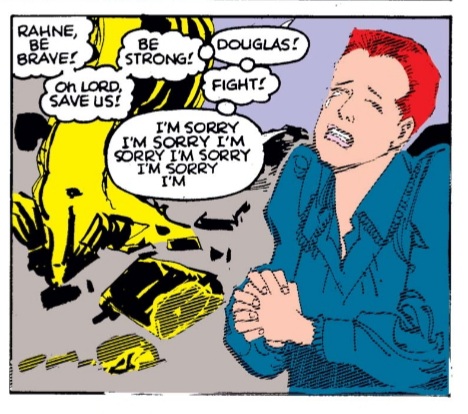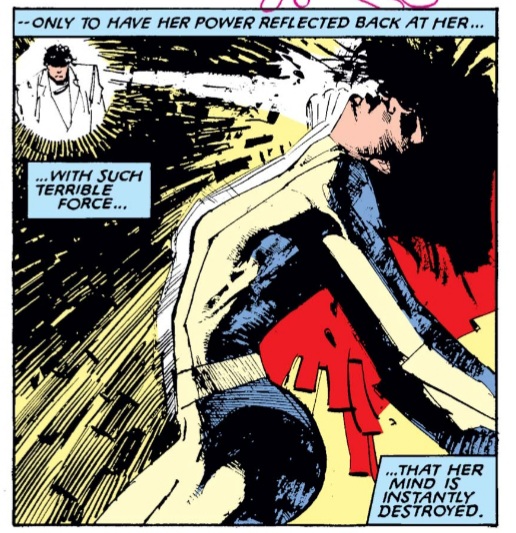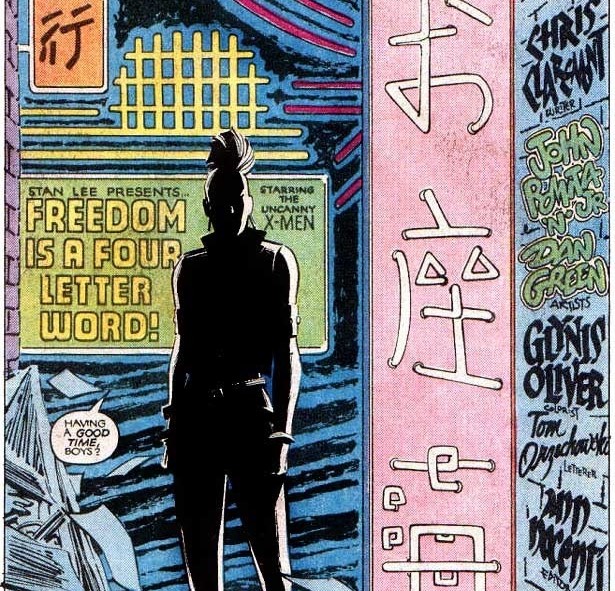Despite the expectations that come with a young cast of characters (but also because of them), The New Mutants is a deeply dark, highly traumatic series. New Mutants #37 takes this to a new level by portraying -on panel- the violent deaths of each character. #xmen 1/6 

Woven into the critically maligned “Secret Wars II” event, the New Mutants have rejected the indoctrination of the Beyonder and, insulted by this, the Beyonder arrives to claim their lives if he can’t have their loyalty. As Dani astutely observes, it’s no contest. 2/6 

The Beyonder toys with the team before killing them in nightmarish ways. Rahne’s death, an execution while she kneels in her prayer, is particularly horrific, while Doug’s casual death while espousing the value of friendship is symbolic of the lack of plot armour. 3/6 







The massacre also features interesting connections to both Dani’s Cheyenne heritage and her Valkyrie role. For the latter, Dani is tormented by visions of forthcoming death and must accept these visions as part of her new role (and she does). 4/6 

For the latter, she’s also connected to visions of her ancestors who were, themselves, once the subject of massacre, thus suggesting that the Beyonder’s horrific murder of the New Mutants is analogous to the massacre of Indigenous peoples in America. 5/6 

Claremont foreshadows this expertly in an opening scene that features Dani just barely tolerating the team’s enjoyment of a John Wayne movie, while Rahne is the only one to recognize the impact of the symbolic violence on Dani, who she stands up for. 6/6 

• • •
Missing some Tweet in this thread? You can try to
force a refresh






















